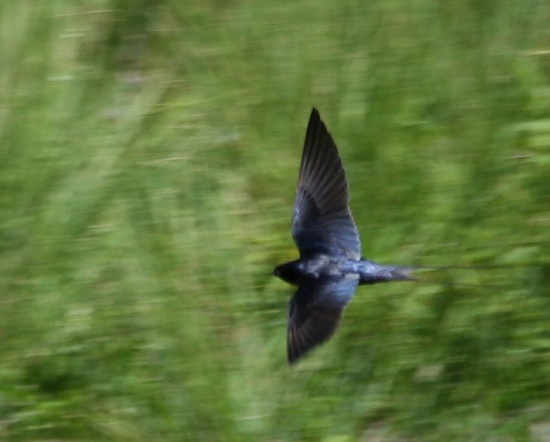| Line 1: | Line 1: | ||
| − | ;Hirundo atrocaerulea | + | [[Category:Hirundo]] |
| + | ;[[:Category:Hirundo|Hirundo]] atrocaerulea | ||
| + | [[Image:2008_01_30_Blue_Swallow_9052.jpg|thumb|550px|right|Photo by Alan Manson<br />Roselands, near Richmond, KwaZulu-Natal, South Africa.]] | ||
| + | |||
==Identification== | ==Identification== | ||
Length 18-25 cm. Male: A dark metallic-blue swallow (appears black in poor light) with very long outer tail feathers. Female: Similar to the male, but with a shorter tail. | Length 18-25 cm. Male: A dark metallic-blue swallow (appears black in poor light) with very long outer tail feathers. Female: Similar to the male, but with a shorter tail. | ||
Revision as of 06:15, 31 January 2008
- Hirundo atrocaerulea
Identification
Length 18-25 cm. Male: A dark metallic-blue swallow (appears black in poor light) with very long outer tail feathers. Female: Similar to the male, but with a shorter tail.
Distribution
An intra-African migrant. Breeds in highland grasslands in eastern South Africa, western Swaziland, western Zimbabwe and adjacent Mozambique, Malawi, north-eastern Zambia, south-western Tanzania, and south-eastern Democratic Republic of Congo. It visits north-eastern Democratic Republic of Congo, southern Uganda and western Kenya in the southern winter (BirdLife International, 2007).
Taxonomy
There are two subspecies: H. a. atrocaerulea; and H. a. lynesi.
Habitat
Grasslands in areas of high rainfall. Classified as Vulnerable in the 2007 IUCN Red List, due to the limited range and the threat of habitat loss (BirdLife International, 2007). The species is approaching extinction in South Africa and Swaziland, largely as a result of commercial afforestation in areas that were previously grassland.
Behaviour
Bird Song
References
BirdLife International (2007) Species factsheet: Hirundo atrocaerulea. Downloaded from http://www.birdlife.org on 25/10/2007.
Lepage D. 2007. Avibase. Search for "Hirundo atrocaerulea" downloaded 25 October 2007.




